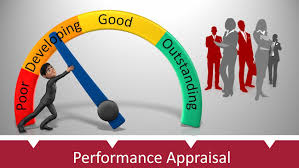Spend to Save – Wisdom or Myth?
It is fact that the COVID-19 pandemic has
globally created havoc and the world is still reeling under the consequences.
Moreover has this tragedy affected the global economy and the way in which
business is conducted. However, the economists and other influential people are
telling us that the worst is yet to come.
Amidst al the doom and gloom, there are businesses that still operate or are busy desperately to find ways and means to survive. Survival is applicable to all scale of businesses – from the smallest solo operator to global conglomerates. Human ingenuity and entrepreneurial is being tested like no other time in history. The world has survive in the past. There were global conflicts and pandemics that tested the existence of mankind, but the world has survived.
In a quest to survive, business owners and managers must look at every available avenue to find the best possible solution. One of the main items being scrutinized is the matter of cost or expenditure. It is a well-accepted principle that organizations must amongst other items drive their cost down in order to grow their profit. Amy form of cost, be that input cost or overhead expenditure, needs to be examined and scrutinized to ensure that every cent that is being spend will deliver maximum return. With a maximum return, there is a better chance of obtaining a higher profit.
Finding ways to minimize cost cannot be executed with a tunnel vision. It is impractical to look at balance sheet items and randomly pick cost items that can be reduced or eliminated. Cost reduction exercises must take into consideration the knock-on effect of such decisions. One example is the cost of fuel for vehicle transport. It is easy to reduce fuel cost by driving less. But how will driving less affect customer relationships? Will driving less cause my customers to wait longer for goods and services? Such a knock-on effect will cause more damage than a saving on the balance sheet.
The point being made is that cost reduction is not a simple statistical exercise. It could be futile to not consider what the effect of cost-saving will be. The other side of the coin is equally true. Re-inventing or upgrading as dictated by survival is associated with cost. But the cost of adopting to a new world cannot be considered on its’ own. The effect of such an expenditure needs to be considered along with the cost. An investment in new technology has the potential to bring about more savings on the long term and outweigh the initial investment. To this end is wisdom and entrepreneurial foresight required. The wisdom to understand that the world is ever changing and we need to change with world. Entrepreneurial foresight to pursue and embrace sustainability and growth. For if only the cost of renewal is taken into account, a futile statistical exercise is conducted. To deep dive into what new efficiencies new technology will deliver with the cost investment before a decision is made, is leadership excellence.
Business owners and managers are so often busy focusing on survival in these tough times that when presented with new alternatives, only the initial cost factor is considered. Tough times require tough decisions. Tough decisions require tough leaders.
Is spending to save money wisdom or is it a myth? Spending to save sounds like a contradiction in terms. The reality is that spending wisely to save big in the long run might be the only way to survive competition in these tough times.
Next time you are being presented with new
technology, dig deeper than just the initial cost. Ask what can be achieved in
the long run, even if funds are tight. And be the wise leader that beat your
competition.
Pieter Coetzer
https://liongatesolution.co.za





Comments
Post a Comment